Historically delayed planting season, commodity prices rising, U.S.
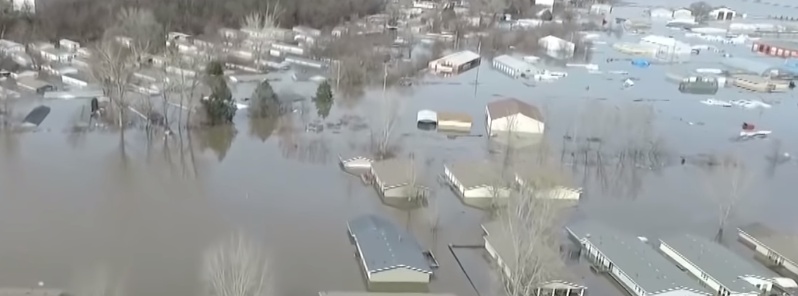
Catastrophic floods affecting the United States since mid-March 2019 are resulting in what experts are calling historically delayed planting season. The situation is already having a big impact on commodity prices but the full extent will be known by the end of the year and into 2020 planting season.
From January to early March, average temperatures in the Midwest remained in -6 to -1 °C (20 to 30 °F) range, with record snowfall in many areas, including the early March blizzard which dumped up to 0.9 m (3 feet) in some areas.
Temperatures rose to 15 °C (60 °F) from March 11 to 13 and combined with 38.1 mm (1.5 inches) of rain to quickly melt the snow and cause unprecedented runoff into local streams and rivers.
Many of the rivers were still frozen over with a thick layer of ice, which the powerful flow of water broke up and dislodged, creating massive chunks of ice that traveled downstream, acting like a plow.

Catastrophic flooding is having a huge effect on 2019 planting season, leading to what experts are calling a historically delayed planting season.
According to data released Tuesday, May 28 by the Agriculture Department, 18 states that produce the majority of the United States’ corn crop had an average of 90% of their fields planted by the end of May over the past 5 years. As of May 26, 2019, 58% of the corn crop and just 29% of soybeans were planted.
Among the top six corn-producing states (Iowa, Illinois, Nebraska, Minnesota, Indiana and South Dakota), Iowa is standing relatively good with 76% of planted crops but is still behind its 96% of 2014-18 average. Illinois is catastrophically low, with 35% planted, down from 95% of its 2014-18 average; the same as South Dakota with 25% planted, down from 90% of 2014-18 average; and Indiana with 22% planted, down from 85% of 2014-18 average.
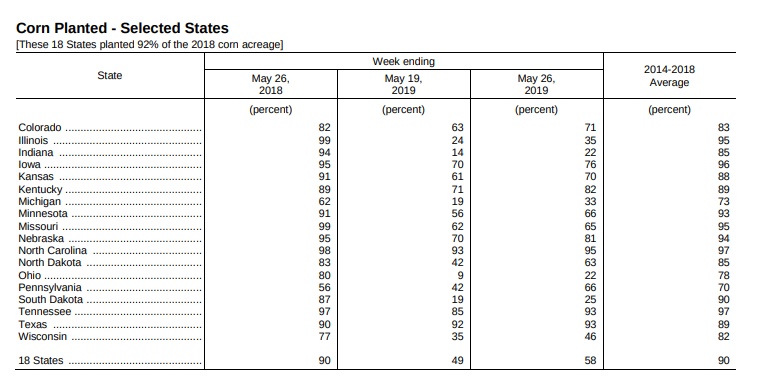

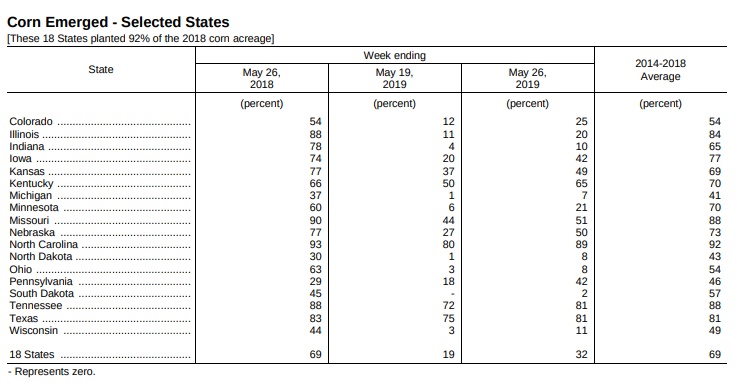

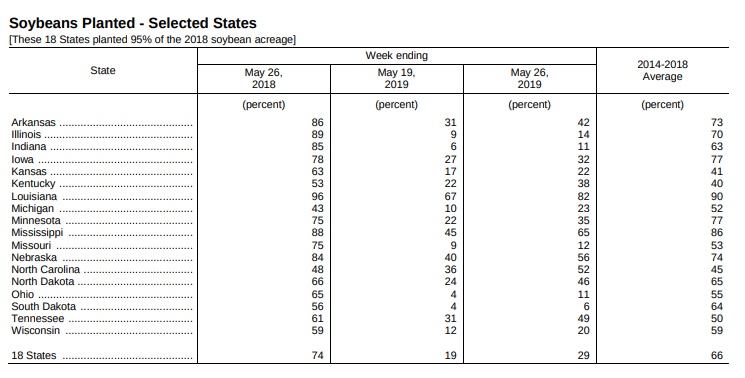

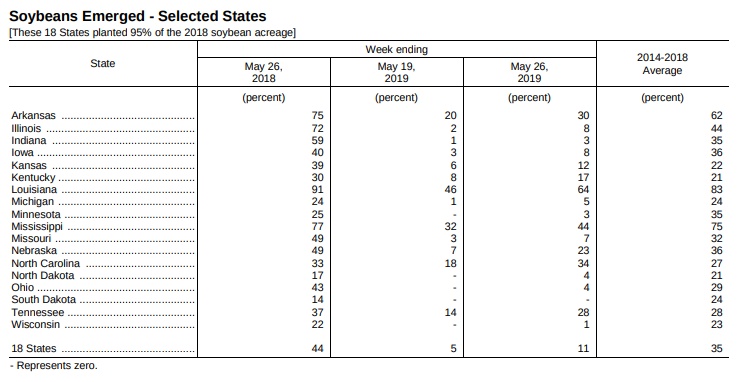

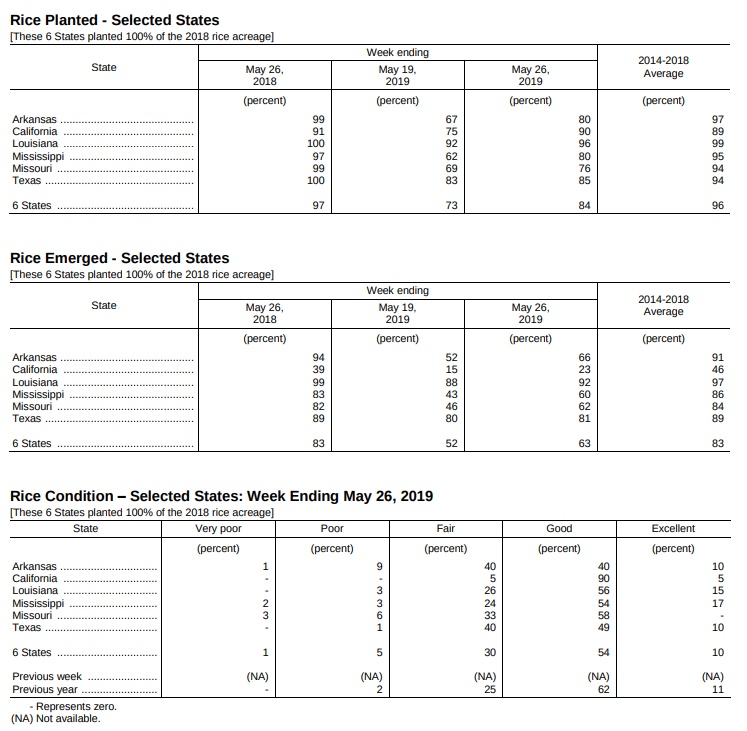

Data source USDA. Valid May 26, 2019
Another wet weak is expected across much of the Corn Belt but the first week of June looks like 70% of it may by dry for five or six days – something farmers haven't seen so far this year, AccuWeather meteorologist Jason Nicholls said.
"Many U.S. farmers face an impending decision regarding their planting plans," Nicholls said. "Farmers with crop insurance can receive payouts instead of planting their crops, which helps the farmer but cuts into U.S. agricultural supplies."
"Historical data shows that corn yield could drop roughly 22% if corn is planted on June 4. If the corn hasn’t been planted by next Tuesday [May 4], the yield will really drop off," said Nicholls.
The next Crop Progress report is due Tuesday, June 3.


Featured image: Bellevue, NE floods 2019. Credit: City of Bellevue

Quotes: “The planting season is historically postponed, prices for raw materials are rising, the United States.”
Posted by Teo Blašković on June 1, 2019 at 18:28 UTC.
Categories: Agriculture, Selected Articles, Floods.
“The catastrophic floods in the United States since mid-March 2019 lead to what experts call the historically delayed landing season. The situation is already having a major impact on commodity prices, but this will be fully known by the end of the year and by the 2020 planting season. ”
Such destruction of the climatic parameters of the United States have not yet seen. Some of them can still be restored, some go into irreversible processes.
I advise the leadership of the United States to begin the immediate adaptation of climate parameters to centuries-old norms. So far, when calling me to work in the US, I will eliminate all the parameters that have gone from the rules. But in case of delay until the next year, huge forces and fabulous sums of money will be spent on the elimination.
Sincerely, environmental programs developer, Victor Rodin. Ukraine. Khmelnitsky NPP. Tel. Kiev Star: 961336344. Mail: dorosydos@gmail.com, rodinviktor@lenta.ru
— — —
Цитаты: «Исторически откладывается сезон посева, цены на сырье растут, США».
Сообщение от Teo Blašković 1 июня 2019 года в 18:28 UTC.
Рубрики: Сельское хозяйство, Избранные статьи, Наводнения.
«Катастрофические наводнения в Соединенных Штатах с середины марта 2019 года приводят к тому, что эксперты называют исторически отложенным сезоном посадки. Ситуация уже оказывает большое влияние на цены на сырьевые товары, но в полной мере это будет известно к концу года и к сезону посадки 2020 года».
Таких разрушений климатических параметров США ещё не видели. Часть из них ещё можно восстановить, часть уходит в необратимые процессы.
Я советую руководству США начать немедленное приведение климатических параметров к многовековым нормам. Пока, при вызове меня на работу в США, я устраню все параметры, которые ушли от норм. Но при промедлении до следующего года, на устранение будет потрачены огромные силы, и баснословные суммы денег.